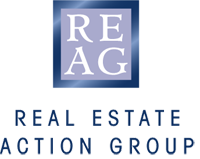Investors are always searching for profit or yield, but how do you know what actual cash flow there comes out of a given property? Well, Real Estate investors – small and large – use what they call a cap rate to find the true net income. But to find that elusive rate is one of most difficult and perplexing problems for realtors and investors. Market comparables are often hard to find and the income and expense statements often only a wild dream by the owner.
Comparables for an older apartment building may also be harder to come by – not as easy as – say a residential house – houses sell all the time – lots of similar houses, lots of sales.
Also, cap rates are determined in a precise way. You want to arrive at the cash remaining after deducting the Operating Expenses from the Effective Gross Income (EGI).
You have to remember that you must remove: it should be but it isn’t. There are several items, which often appear on financial statements, which must be deleted before calculating the Net Operating Income (NOI).
- Debt Service, i.e., principal and interest payments are ignored because the Net Operating Income reflects the earning capacity of the property exclusive of financing.
- Depreciation allowances or any other purely bookkeeping or Income Tax deductions are ignored.
- Capital Expenditures which provides long term benefits such as replacing appliances, painting of the building etc. are omitted.
So, you hear a cap rate is 5%. In Vancouver we sell 75 year old apartment buildings with an even lower 4% cap rate… But since we cannot count the capital expenses – but you WILL have them – the actual rate is likely even lower. That is why it is important to study the statements.
Ok, what should an investor look out for?
- Make sure you have a real statement – not a projected income statement
- Make sue everything is accounted for – vacancy rates, etc.
- Make sure you strip out depreciation, expenditures and mortgage payments
- Compare the cap rate to the rate prevailing in the market.
- Make sure that the return is real and not a wish
- Don’t rely too much on cap rates: ASK: How old is this building … if it is commercial do you have ‘A’ tenants … a bank or a laundry?
The cap rate is a good guide … but better used to compare the level of the commercial markets in cities than individual buildings.
Too many variables.
For the full story including actual examples susbcribe to factsbyemail.com (This week included are 2 of Ozzie’s books or a ticket to Outlook 2016 – Sept 26, 2015)




Hey I aam soo happy I found your site, I really found you by
error, while I was browsing on Bing for something else, Anyhow
I am here now and would just lijke to say thank you for a incredible post and a all rond thrilling blog (I also love the theme/design),
I don’t have time to look over it all at the minute but I have
book-marked it and also included your RSS feeds, so when I have time I will be back to read a great
deal more, Please do keep up thee superb b.